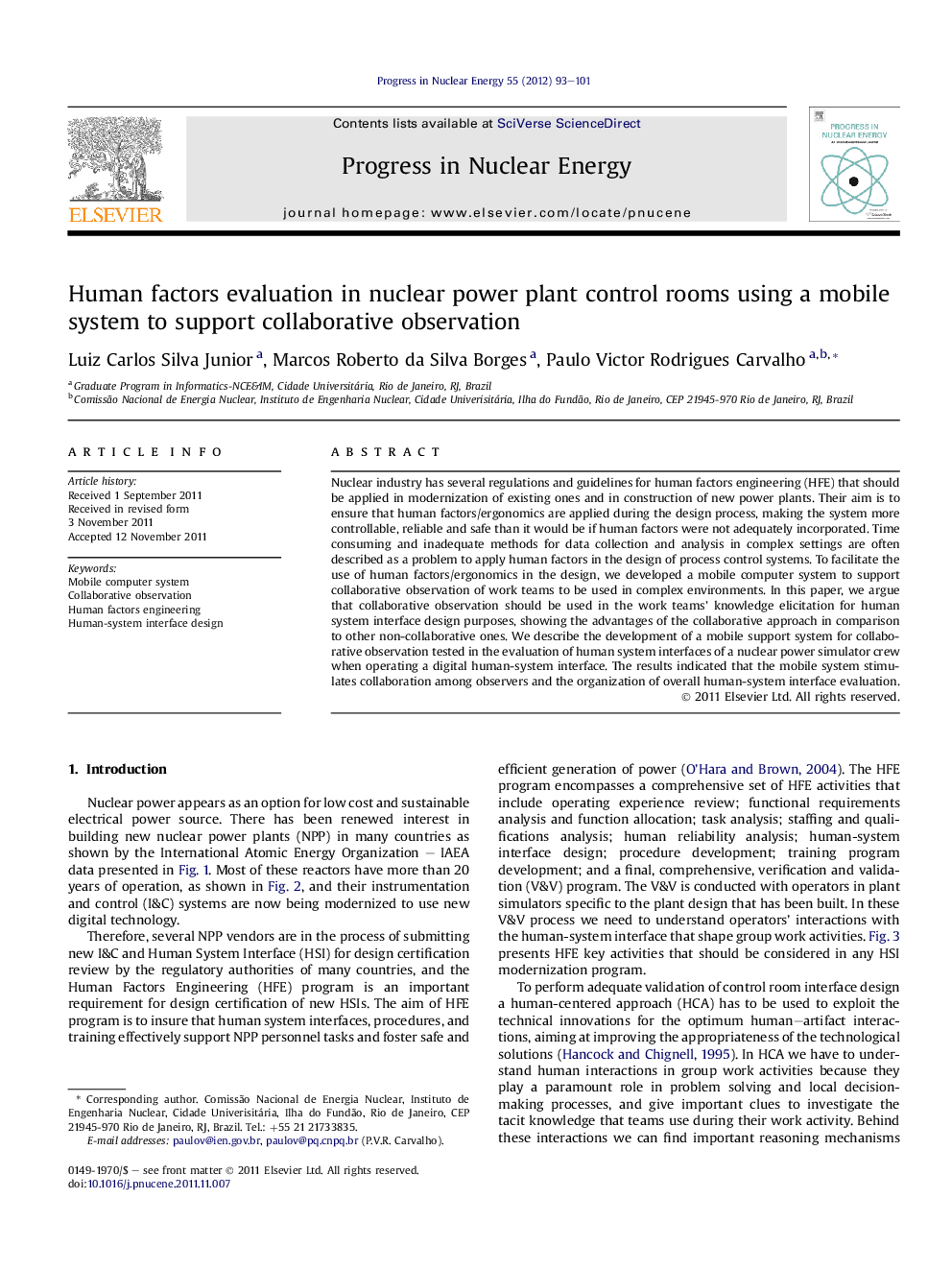| کد مقاله | کد نشریه | سال انتشار | مقاله انگلیسی | نسخه تمام متن |
|---|---|---|---|---|
| 1741156 | 1521783 | 2012 | 9 صفحه PDF | دانلود رایگان |

Nuclear industry has several regulations and guidelines for human factors engineering (HFE) that should be applied in modernization of existing ones and in construction of new power plants. Their aim is to ensure that human factors/ergonomics are applied during the design process, making the system more controllable, reliable and safe than it would be if human factors were not adequately incorporated. Time consuming and inadequate methods for data collection and analysis in complex settings are often described as a problem to apply human factors in the design of process control systems. To facilitate the use of human factors/ergonomics in the design, we developed a mobile computer system to support collaborative observation of work teams to be used in complex environments. In this paper, we argue that collaborative observation should be used in the work teams’ knowledge elicitation for human system interface design purposes, showing the advantages of the collaborative approach in comparison to other non-collaborative ones. We describe the development of a mobile support system for collaborative observation tested in the evaluation of human system interfaces of a nuclear power simulator crew when operating a digital human-system interface. The results indicated that the mobile system stimulates collaboration among observers and the organization of overall human-system interface evaluation.
► We develop a mobile computer system to support collaborative observation.
► We describe why to use collaborative observation in evaluation of complex systems.
► The system was tested in the evaluation of a NPP control room.
► The system stimulates collaboration and organization of the interface evaluation procedure.
Journal: Progress in Nuclear Energy - Volume 55, March 2012, Pages 93–101